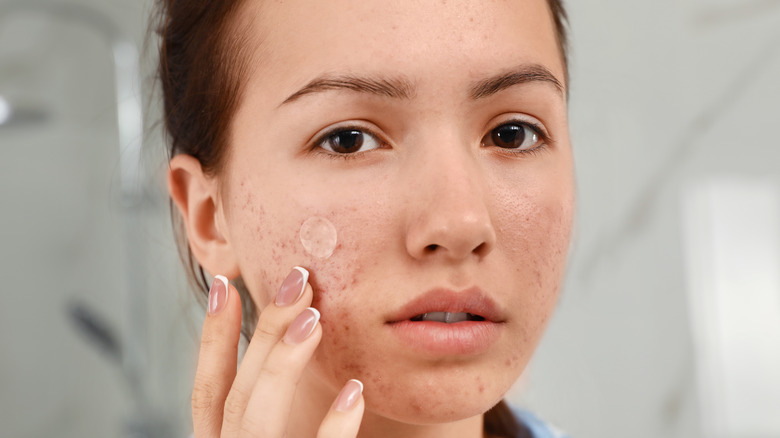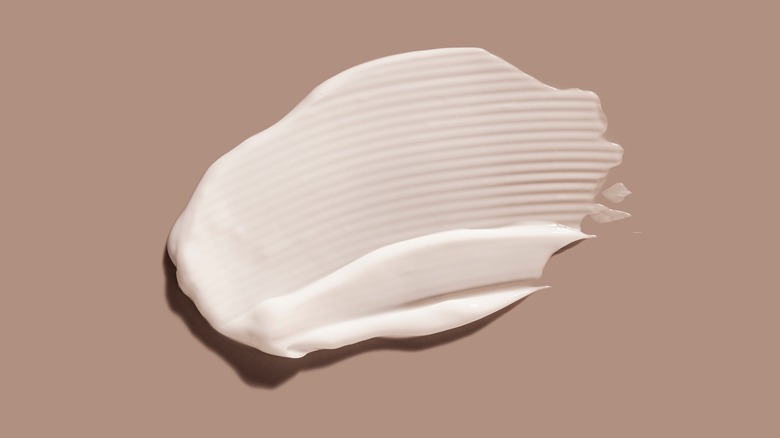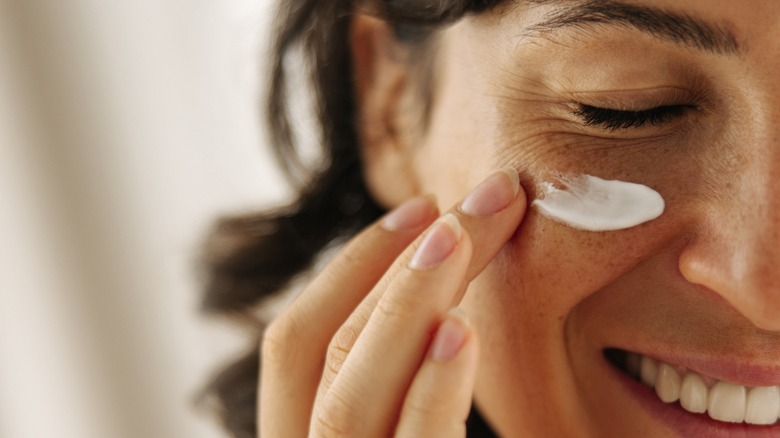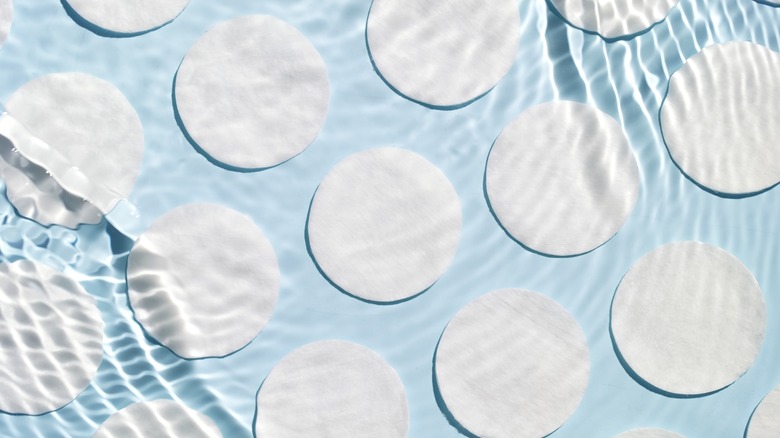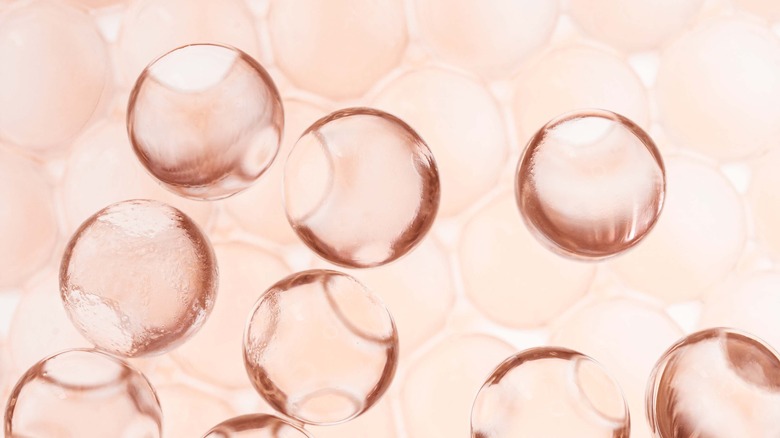Paper Moisturizer: The Sustainable Skincare Swap That Should Be On Your Radar
The beauty industry is wasteful, and we should not sugarcoat it. From its staggering indices of yearly 120 billion units of non-biodegradable packaging to the lack of recycling schemes across several beauty brands, the beauty industry has played a significant role in furthering the plastic boom, per Commercial Waste. And unfortunately for us, these plastic statistics have real-life implications for our health, our oceans, and our resources.
With calls for sustainability, eco-consciousness, and the fear of microplastics, beauty brands are now making slow but steady changes. From decisions like Lush's adoption of solid beauty bars to brands making refill pods for their products — beauty that centers conscious use of scarce resources is now the in-thing. But apart from our plastics and packaging problems, there is one more manufacturing essential we need to worry about. Yes, you guessed it: water.
Water is essential in cosmetics, from its use as a solvent to its role in binding components of cosmetic formulations. CosmeticOBS says 60% of their moisturizers are water; this proportion can go as high as 95% for lotions, shower gels, and shampoos. The problem is for a planet where half of the entire population could face water scarcity by as early as 2025, too much water is being used up on our beauty essentials (per UNICEF). With these stats, the beauty industry needs more "waterless skincare." And thankfully, the researchers at the University of East Anglia might have found the perfect solution for this.
What is paper moisturizer exactly?
Water is currently indispensable to our skincare as the chief solvent in many cosmetic formulations and the making of emulsions. But the billions of tonnes of water used present several problems: The energy used in sourcing and using this water, the fuels used in transit of water and skincare products, and the potential planet-wide scarcity of freshwater. The search for viable alternatives is on, and paper moisturizer just might be the one.
Research scientists at the University of East Anglia (UEA) revealed DRIES, their newly-developed technology of making cosmetics anhydrous, or in simple terms, waterless. Rather than a jar of moisturizer or serum containing a high percentage of water, their DRIES technology removes up to 98% of the water and oil in skincare products via electrospinning, per Packaging Insights. The outcome is flat, dry, and paper-like discs that transform back to regular moisturizer on contact with drops of water. Here's more info on how these paper-like discs work.
How does it work?
As the lead researcher at UEA's School of Pharmacy, Professor Sheng Qi, explains, these paper-like discs of moisturizer are made by rapidly pushing the water out of the product through a liquid jet. The solid form or residue is left while the water is expelled, via the University of East Anglia. These solid residues are usually in the form of really thin fibers formed due to the rapid jetting, and they land on top of each other to create dry paper-like moisturizer discs.
With these paper pimple-patch-lookalikes, all you need to do is add a drop or a few drops of water, and just like that, your disc is back to being your lotion or serum. As Prof. Qi also says, this innovative technology aims to reduce the need for so much water in manufacturing and application and reduce fuels used during shipping and supplying such large amounts of water in our cosmetics. Here's why this brilliant lotion-in-paper technology might be the game-changer in a sustainable beauty routine
The benefits of the DRIES technology
According to Essential Wholesale & Labs, the sheer amount of water used in formulating cosmetics makes it the heaviest and the most common ingredient. Not only does this affect water availability in certain regions, but it also impacts shipping costs and the fuels burnt during shipping and manufacturing. If you have a jar of moisturizer made of 65% water, chances are you've spent considerable money shipping water to your doorstep. Less water in your cosmetics means it's lighter, and as you know, lightweight items equate to lower shipping costs. The paper moisturizer promises to be cost-effective for beauty brands trying to reduce fuel and transit charges. In addition, the dry skincare paper discs reduce your carbon footprint and packaging waste (per Professional Beauty).
With the cosmetic paper discs by Professor Qi and her team, there's also the promise of less heat use. Unlike other waterless skincare manufacturing processes which use heat, Professor Qi confirms that the DRIES technology does not utilize heat in its drying process (via UEA). This means delicate heat-sensitive skincare ingredients like peptides and proteins are not damaged during drying. Ultimately, you save energy, fuel, and costs —a win in our book.
Paper moisturizer and the need for preservatives
Other than the loud calls for sustainability in beauty, there has been the lower-toned but ever-present clamor for health-conscious beauty. With the meteoric rise of interest in clean beauty, preservatives and additives like parabens and phthalates have faced the ingredient guillotine. And while it is controversial health-wise, "preservative-free" is a new beauty cool. However, in an era that prioritizes less waste, there is still a need for healthy preservative systems. UEA's DRIES technology promises such. As NATRUE explains, water can be a habitat for microorganisms and facilitate microbe growth in cosmetics. However, a paper moisturizer or skincare product contains little to no water, allowing the product to last longer with less need for preservatives.
Overall, the researchers at UEA and their innovative DRIES technology are both excellent and promising, but there is still much work to be done with scaling and testing. And while there are currently no products utilizing this technology yet, it is only a matter of time before most of our water-based cosmetics have the added tagline: just add water.
